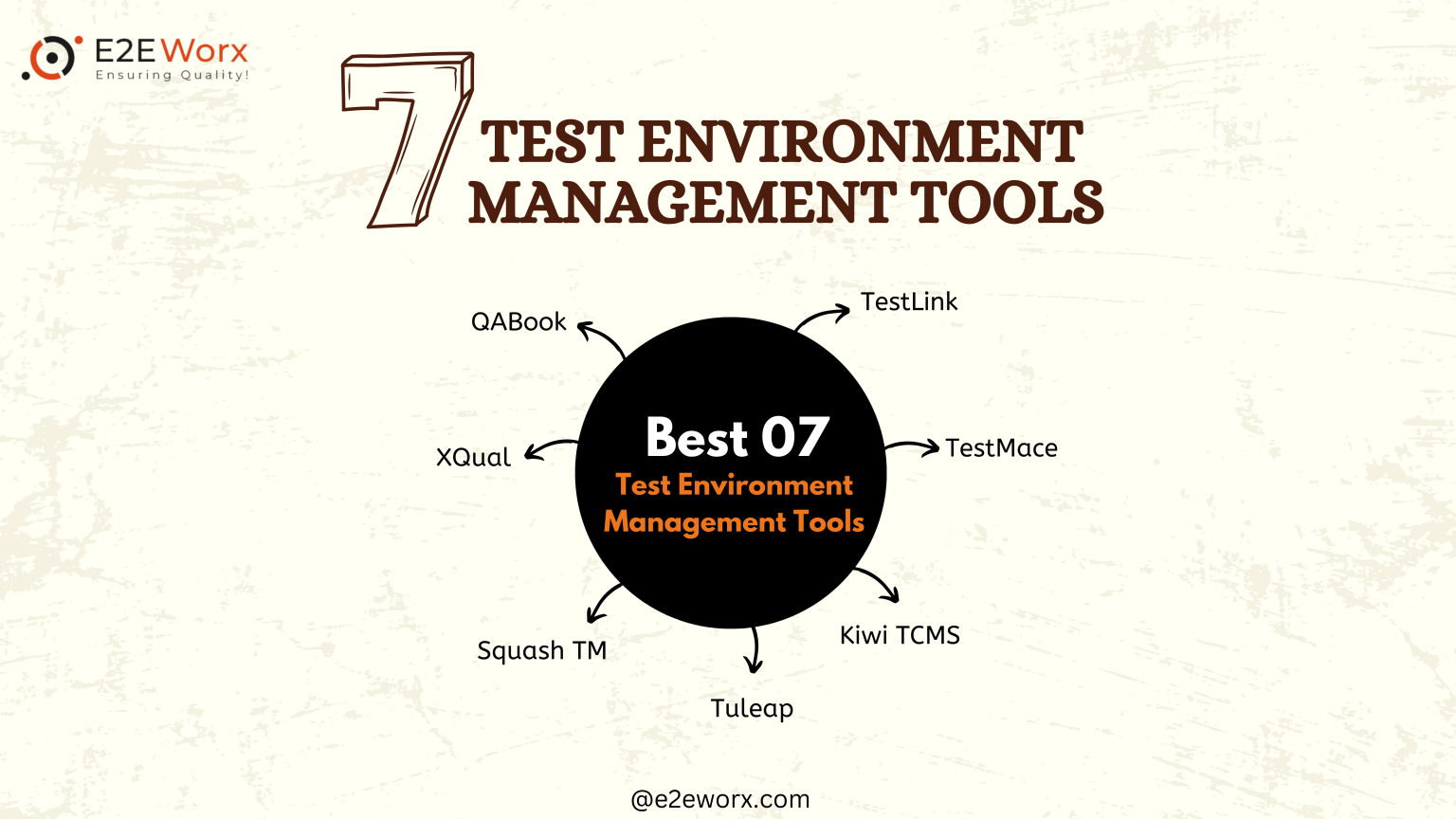Test Environment Management (TEM), In this blog, we’ll be discussing Test Environment Management Tools and their types.
The Software Quality Assurance process requires a comprehensive environment for both clients and end users. Since the environment and strategies always impact individuals, it is necessary to maintain healthy and consistent conditions for them. Concerning this, Test Environment Management (TEM) discourses.
A Test Environment Management services & system (TEM) involves planning, coordinating, and controlling resource configurations while dealing with the conditions required for creating and maintaining software test domains. This process also implicates managing all aspects of a testing process, including the software dependencies, test data, and other components.
Besides, when maintaining an effective and efficient test environment, it is imperative to always stay up-to-date and use automation tools. These tools support the QA team to create multiple test environments at a time and improve the test range while allowing the QA team to deliver quality work.

Why We Use Test Environment Management Tools?
Using Test Environment Management Tools is influential for many reasons. It has several benefits when it comes to software testing and development. It helps organizations streamline their testing activities, improve efficiency, reduce errors, and ultimately deliver high-quality software. In addition to automating and simplifying various environment-related tasks, these tools allow testing teams to focus more on actual testing activities rather than managing and maintaining test environments.
Below are some key reasons to utilize these tools
Most Efficient and Generally used Test Environment Management Tools
- Efficient Resource Utilization
Operating the TEM tools allows for efficiently utilizing the testing resources, including hardware, software, and virtual environments.
- Faster Test Environment Setup
Manual test environment setup can be time-consuming and error-prone. Environment management tools automate the setup process, allowing faster and more consistent provisioning of test environments.
- Effective Test Data Management
Collecting and maintaining test data manually is a difficult task. These tools allow to streamline test data management by providing features to create, import, sanitize, and manage test data sets.
- Collaboration and Team Coordination
Environment management tools facilitate collaboration and coordination among testing teams, development teams, and other stakeholders.
- Enhanced Reporting and Auditability
Environment management tools often include reporting and tracking capabilities, providing insights into environment utilization, availability, and issues.
Several open-source test management tools can help in efficiently managing testing activities. Here are some popular open-source test management tools.
- TestLink
TestLink is one of the most widely used open-source test management tools that provide a web-based interface for managing test cases, test plans, requirements, and test execution. Besides, help in creating the test suites, track test progress, and generate various reports. - TestMace
TestMace is an API testing and test case management tool that allows you to create and manage test cases, organize them into folders, and execute tests. It also supports additional features like test data management and reporting the test results. - Kiwi TCMS
Then we have Kiwi TCMS, which is an open-source test case management tool. It also supports elements like test case creation, execution tracking, and results management. Besides, helps in issue tracking by integrating with popular testing frameworks. - Tuleap
Tuleap is also one of the most effective and most commonly used Test Environment Management tools. It’s an application lifecycle management (ALM) platform that includes test management features.
It provides credentials for managing requirements, test cases, test plans, and tracking defects. Additionally, offers integration with version control systems and issue trackers. - Squash TM
SquashTM is an open-source tool for managing test cases, planning tests, and tracking results. In addition to defining test cases, associating them with requirements, and tracking test execution status, it allows you to define test cases. It also supports integration with various testing frameworks. - XQual
Testing management tool XQual provides test case management, test execution, and defect tracking functionality. The software lets you define test cases and execute them, as well as track their results. Moreover, it integrates with a variety of testing frameworks and tools. - QABook
Lastly, QABook is one of the test management tools that is built on Atlassian JIRA. This TEM tool extends JIRA’s capabilities to support test case management, test execution tracking, and reporting. It allows you to organize tests, link them to requirements, and track test results.
These open-source test management tools provide a range of features to support and efficiently manage software quality assurance services. Evaluate them based on your specific needs, such as ease of use, customization options, integrations, and community support.
Conclusion
Like every other area Software Quality Assurance is also a domain that needs an efficient and effective environment to provide quality work to the end users.
It helps ensure that the testing process is conducted in a controlled and stable environment, minimizes test execution failures due to environmental issues, and improves the overall quality and reliability of the software being tested.
By leveraging environment management tools, organizations can streamline their testing activities, improve efficiency, reduce errors, and ultimately deliver high-quality software products.
